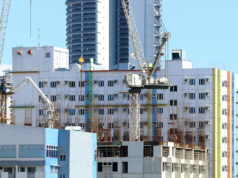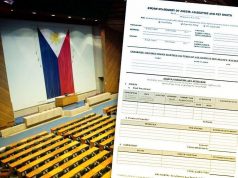The regionwide Panay Food Center and Terminal in San Miguel, Iloilo is not a threat to the public markets in Iloilo City and will lower costs by doing away with the need to travel to distant suppliers, a city official said.
The terminal is intended to better connect producers and their markets, according to Iloilo City Local Economic Enterprise Office (LEEO) head Jose Ariel D. Castañeda.
“With the introduction of food terminals, we can create opportunities to bridge the gap between the producers and the businessmen. Local Food Terminal (LFT) has no effect to our public markets here in the city. It’s actually an opportunity for dealers, businessman, and farmers,” he said.
According to Mr. Castañeda, 60% of the fruit and vegetables coming into the city being sold in the markets are from outside of Iloilo Province.
He noted that 70-80% of these requirements can be supplied by Iloilo farmers.
“The 60% of the supply will be captured instead of being supplied from ouside the province. The produce of the farmers will not go to waste because of the food terminals,” Mr. Castañeda said.
Mr. Castañeda added that food terminals will also lower costs for vendors and entrepreneurs because it rules out the need to procure from other provinces.
“If there is local supply, that reduces their expenses and risk,” he said.
The P11.8-million LFT was inaugurated on Feb. 7.
The project also includes a solar-powered cold storage facility with a capacity of 12 cubic meters, an office, training center, and delivery vehicles.
The LFT was built with assistance from the Korea International Cooperation Agency (KOICA), which supports the Panay Island Upland Sustainable Rural Development Project (PIU-SRDP) with the Department of Agriculture (DA) with the aim of empowering upland communities by providing them direct market links to consumers.
It will serve as the regional consolidation hub for upland products from the various Bayanihan Tipon Centers (BTCs) in Panay.
KOICA also provided a P20-million loan fund which can be tapped by farmers’ groups and individual farmers for their marketing-related activities.
Meanwhile, Mr. Castañeda is hopeful that Iloilo City will be included in the next KOICA grant.
He said KOICA and DA will meet on Feb. 27-28 to discuss future plans.
“Initially, (Iloilo City) was included but somebody told KOICA that city markets do not need any help,” he said.
If Iloilo City is included, Mr. Castañeda said KOICA is ready to provide a grant to rehabilitate markets and upgrade vehicle fleets.
“In our initial talks, they are looking into rehabilitating the facilities of food terminals and markets to accommodate the producers from out of town,” he said.
Mr. Castañeda added that the city is proposing for funding the rehabilitation of one of the top three highest earners among the public markets in the city. The top three are La Paz Market, Jaro Market, and Terminal Market. — Emme Rose Santiagudo



